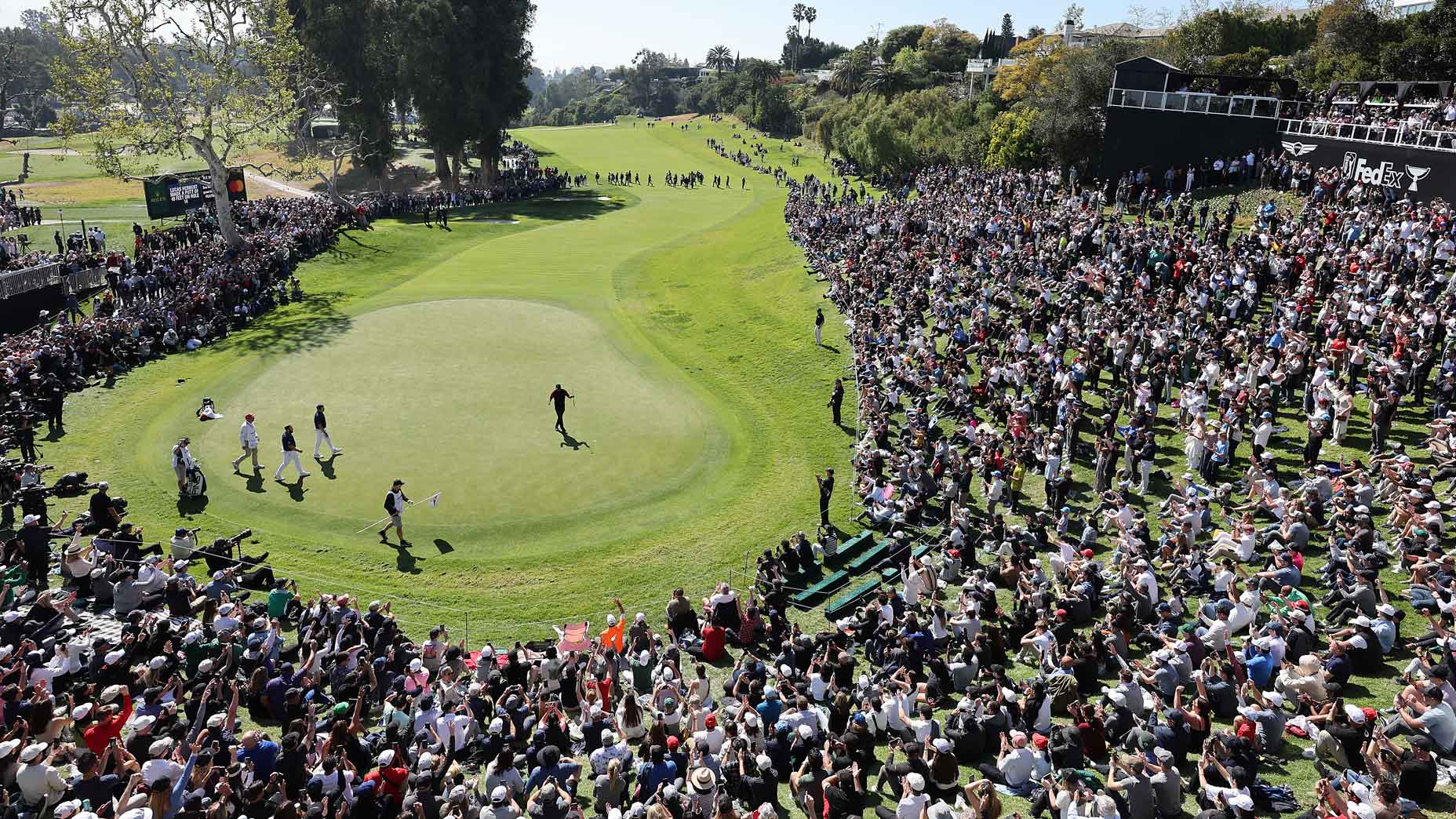For the second year in a row, the PGA Tour is making major changes to its schedule and structure.
After creating big-money designated events for 2023 that guaranteed the top players would compete together more often, the PGA Tour policy board approved more changes to those tournaments for the 2024 season. In a memo to Tour players sent on Wednesday, which was obtained by GOLF.com, PGA Tour commissioner Jay Monahan said the Tour is moving forward with what it’s calling the “Designated Event Model.”
Golfweek first reported the changes on Wednesday morning.
The changes will not affect the majors, Players Championship or the three FedEx Cup Playoff events.
According to the memo, eight select designated events in 2024 will consist of 70 to 80 players and won’t have a cut. This year, except for the Sentry Tournament of Champion and playoff events, all non-major designated events are full-field tournaments.
With the new change, fields will be comprised of the top 50 players from the previous year’s FedEx Cup Points List and the top 10, not otherwise eligible, from the current year’s list.
There will also be opportunities for golfers not already eligible to play their way into these designated events. For example, the Tour will space out its designated events and full-field events, and the top-five players who earn the most FedEx Cup points in the tournaments between the designated events will earn spots in the next designated event. A win during the 2024 season is also an automatic promotion to the designated events. The final spots in those fields will be made up of PGA Tour members in the top 30 of the Official World Golf Ranking, plus four sponsor exemptions for Tour members.
Additionally, players have been required to play in 16 of this season’s 17 designated events, plus three more non-designated events, to receive their full Player Impact Program payouts. Next season, that requirement will be lifted, but the new structure is designed to “incentivize top performers to participate in the designated events.”
Monahan said the eight designated events for 2024, some of which might be different than this year’s designated events, will be selected at a later date.
The PGA Tour’s designated events were in part created due to the threat of its competitor, LIV Golf, launching last June with $25 million purses. The rush led to a somewhat random placement of events, such as the schedule’s current stretch, which is four designated events in five weeks. Monahan said the new schedule’s cadence will be beneficial for both players and fans.
Wednesday’s no-cut, smaller-field news for select events brought plenty of reaction from players and fans. It also, not surprisingly, caught the attention of former PGA Tour players who have since left for LIV Golf.
Ian Poulter and Lee Westwood — and even the official LIV Golf Twitter account — pointed out perceived similarities to LIV’s 54-hole, 48-man-field, no-cut formats.
Some PGA Tour players addressed the changes in press conferences at this week’s Arnold Palmer Invitational.
“We’ve always had no-cut events on this Tour,” said Rory McIlroy. “If you think of like the four WGCs, you’ve got the three playoffs events, you’ve got the CJ Cup, the Zozo. So there’s precedent there for no-cut events. The only reason no-cut events are a big deal is because LIV has come along. So there is precedent for no-cut events. There’s been no-cut events since I’ve been a member of the Tour and way beyond that as well.
“It keeps the stars there for four days. You ask Mastercard or whoever it is to pay $20 million for a golf event, they want to see the stars at the weekend. They want a guarantee that the stars are there. So if that’s what needs to happen, then that’s what happens.”
World No. 2 Scottie Scheffler also defended the idea of limited fields, adding that it will protect some of the non-designated events, such as last week’s Honda Classic, which had its weakest field since 2007.
“If you imagine you have 120 guys in the fields this year, those 50 additional guys that are not going to be in the fields next year are all playing the events this year and you’re seeing a lot of other tournaments on our schedule suffer because of that,” Scheffler said. “Let’s say if you’re the 100th guy in the world or over or whatever, you’re going to try and play in those $20 million purses and if you’re in the event, how can you skip it? It’s double the money and all that stuff. But now all of a sudden you have those 50 guys that aren’t going to be playing in the next event and that event is going to suffer and there’s a chance we’d lose events because of that.”
He added good play will still be rewarded with the chance to play for the biggest prizes.
“You got to earn your way still out here on Tour,” he said. “There’s plenty of avenues for guys to earn their way into those tournaments, whether it’s this year or next year, with the eligibility for tournaments being top 10 from current FedExCup and there’s other ways to get in the events.”
Monahan also announced other changes, such as the adjustment of the FedEx Cup points model with the allocation of additional points to the Players, majors and designated events. The PIP will also be reduced from $100 million and 20 players to $50 million and 10 players. The additional $50 million will be reallocated to the FedEx Cup Comcast Business Tour Top 10 bonus pools.
Monahan will address the changes in person with players during a Tuesday meeting at next week’s Players Championship, the PGA Tour’s flagship event.
